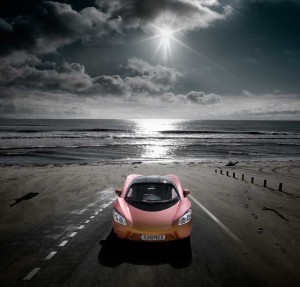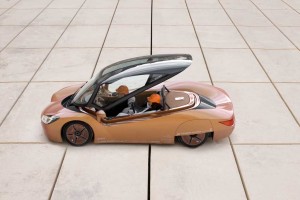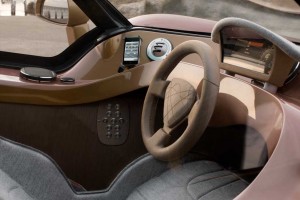
Rinspeed iChange: 1, 2 or 3-seater at the touch of a button
We’ve grown accustomed to seeing some strange and intriguing designs from Frank Rinderknecht, and his Swiss-based Rinspeed. Over the years, he’s turned up at the annual Geneva Motor Show with an assortment of automobiles that can fly, swim and, yes, even drive down paved roads. But the show car Rinspeed plans to preview at the 2009 Geneva Salon International de l’Auto looks to be one of his most unorthodox works yet.
Dubbed the Rinspeed iChange, “It’s the world’s first car whose body adapts to the number of passengers on board,” according to Rinderknecht, who wants to position iChange as, “a symbol for the fundamental changes the auto industry undergoes worldwide.”
One minute, the zero-emissions iChange is a single-seater. But press a button and it converts to a roomy three-seater. “We have designed and built an extremely flexible vehicle,” contends Rinderknecht. “In it we have brought the themes of versatility and continually changing energy demands to their logical conclusions.”
Developed for Rinspeed by the European engineering firm, Esoro, the 2300-pound iChange is powered by a compact lithium-ion battery and electric motor propulsion system that turns out 150 kw, or 200 horsepower. It can launch from 0 – 100 kmh (0 – 62.5 mph) in just over four seconds, Rinspeed claims, and tops out at 220 kmh, or nearly 140 mph.

No doors: iChange
Virtually everything about iChange is different from your conventional automobile. From these pics, you might notice, for example, that there are no doors. Instead, the entire roof section of the car yawns forward to let passengers in. And, of course, there’s no key. Instead, you’ll need to bring along your Apple iPhone, which controls critical vehicle functions. Meanwhile, a specially-designed, low-power Harmon-Kardon infotainment system handles other duties, such as audio and navigation.
Oh, and where most navi systems focus on the fastest or shortest routes, the iChange system will read out the route that consumes the least energy.

Apple iPhone handles mission critical functions
Everything from the synthetic oil to the specially-spun wool used in the interior are designed for maximum eco-friendliness.
Don’t expect the iChange to roll into your nearest automotive showroom anytime soon. And to the best of our knowledge, it’s not planned as the next iPhone accessory. But Rinderknecht – backed by a variety of partners and government agencies – are hoping that it influences the debate over future automotive design and engineering. “If we want to maintain our individual mobility in the future,” the eccentric Swiss suggests, “we have to rethink the car in its entirety, without taboos. Most of all, we have to take its ecological aspects into consideration.” And in the end everyone has to personally answer the same question: Am I ready and willing to change myself, do and can ‘I change’?
